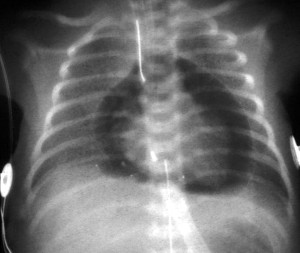Nursing Diagnosis: Decreased cardiac output related to reduced ventricular filling secondary to increased intrapericardial pressure.
Outcome Criteria:
- Patient alert and oriented
- Skin warm and dry
- Pulses strong and equal bilaterally
- Capillary refill <3 sec
- HR 60 to 100 beats/min
- BP 90 to 120 mm Hg
- Pulse pressure 30 to 40 mm Hg
- Urine output 30 ml/hr or 1 ml/kg/hr
Plan/ Interventions:
- Patient monitoring:
- Continuously monitor ECG for dysrhythmia formation
- Monitor the BP every 5 to 15 minutes during the acute phase.
- Monitor for pulsus paradoxus
- Monitor urine output hourly
- Patient Assessment
- Assess cardiovascular status
- Note skin temperature, color, and capillary refill.
- Assess level of consciousness
- Patient Management
- Provide supplemental oxygen as ordered.
- Initiate two large-bore intravenous lines for fluid administration
- Pharmacologic therapy
- Monitor the patient for dysrhythmias
[Above info adapted from http://nursingcrib.com/critical-care-and-emergency-nursing/cardiac-tamponade/]
Other possible nursing diagnoses include:
- Risk for deficient fluid volume
- Impaired urinary elimination
- Risk for infection
- Death anxiety
